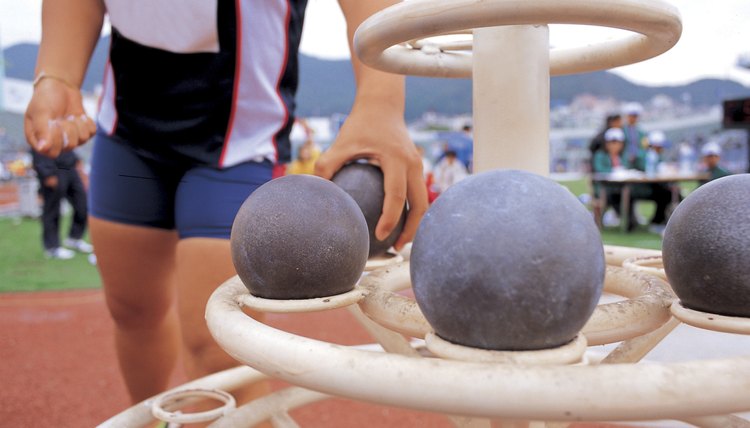The History of Shot Put

The shot put has been an Olympic event since the first modern olympics in 1896 in Rome. It’s a sport that requires technique as well as strength, and changes in throwing style have since led to significant gains in the power of the thrower and the distances achieved.
Origins
Scottish Highland Games historians believe the shot put originated from the ancient Celtic tradition of "putting the stone" which, according to Scottish folklore, was used by Clan chieftains to help them identify their strongest men for battle purposes. The earliest documented evidence of the tradition can be found in an Irish book titled the "Book of Leinster," which was written in the 12th century and describes the events of the Tailteann Games held in County Meath. One of the events included is stone throwing, but how much further back in history the tradition stretches remains unproven.
Rules
Early shot put events were judged on the distance the stone, or shot, could be thrown from behind a raised wooden board following a short run-up of no more than seven feet. By the early 1890s, the run-up had been replaced by a seven-foot-diameter circle marked on the ground with the raised board, now shaped to follow the front edge of the circle. In both cases, stepping over the board meant the throw would be disallowed. An article published in 1892 in the American magazine "Outing" describes the events of the Caledonian Games and discusses the then “prevailing” rule of a “standing” throw from within a circle. The main reason for the change from the run-up to the circle was to increase the accuracy of measurements by being able to measure the exact distance from where the shot landed straight back to the closest point on the edge of the circle.
Shot
The original tradition of throwing a stone evolved into throwing a cannon ball in the 18th century and the term "shot" derived from this period. The shot used in the first modern Olympics held in 1896 was made of lead, while the modern-day shot is made of smooth iron or brass. The men’s shot weighs 7.26 kg and the women’s shot, an Olympic event since 1948, weighs 4 kg.
Style
Before 1951, the main movements involved in the shot put were to stand and throw from a crouched starting position. The winner of the shot put Olympic gold medal in 1896 was Bob Garrett of the USA with a throw of 11.22 m. The current men’s shot put world record holder is Randy Barnes of the USA, who had an outdoor throw of 23.12 m. His success as a thrower is attributed to the rotational style of throwing known as the "spin," which was first introduced in 1976 by American shot putter Brian Oldfield. The spin developed from a throwing style known as the "glide." The glide was pioneered by American Parry O’Brien in 1951 and is now considered a major turning point in the history of the sport as it introduced the technique of facing away from the direction of the throw at the beginning the movement. A key factor in all shot put styles is that the shot must be put as opposed to thrown; this is achieved by keeping the ball in close proximity to the chin in all movements prior to its release.
References
Writer Bio
Linda Purves is a personal fitness trainer and sports coach with professional qualifications gained in many areas including athletics, cycling, equestrian sports and sports psychology. Since 2003 her published articles have appeared in a variety of U.K. magazines including "Your Horse," "Horse and Rider" and "Running Free." Purves' first book, "Horse and Rider Fitness," was published by Kenilworth Press in 2006.
